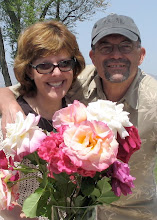Our first full day in Kurume the tour took us to the Ishibashi Cultural Center. Another highlight; what an amazing place! The Center was donated to the city of Karume in 1956 by a native son, Shojiro Ishibashi, the founder of the Bridgestone Corporation. (A parenthetical aside. Bridgestone is well known to Americans for Bridgestone tires. Have you seen “Lost in Translation” where Bill Murray plays an American celebrity who comes to Japan to do an advertisement for the Japanese market? Leonardo Di Caprio’s face is everywhere we have been in Japan pushing Bridgestone tires.) You can check out the Center’s website and brush up on your Japanese at www.ishibashi-bunka.jp. The center includes an art museum, music auditorium, culture hall, library and other facilities. The grounds encompass a swan pond, a rakusui pond and a lotus pond. There is a cherry lane, a rose garden, an iris garden and, of course, a camellia garden.
We had the great good fortune of being there on a day when the sun was shining brightly and the temperature was in the low 60’s so we could wander around freely in comfort. In a small area near the library there was a pavilion of merchants demonstrating their wares. One booth featured 3-D television. I had to stand behind the last row of seats to make the 3-D glasses work over my prescription lenses so I could both see the screen and get the effect but it was very cool. I stood through the whole demo video, about 10 minutes. This was also where I did some sake tasting and bought the non-alcoholic rice drink mentioned in a previous post. The high end sake was also excellent but I decided to pass on that for the time being.
The outdoor stage featured a constant stream of performers although the only ones that presented a photo op that I saw were the young dancers who are featured in one shot included in the accompanying photo album. The art museum was a revelation to me as I was totally unfamiliar with Japanese art other than the well known woodblock prints of Hokkusai and others working in the past. The museum had a great deal of contemporary art (by which I mean 20th Century) that I was completely unfamiliar with. A wide range of styles and subject matter were represented and some of the artists were outstanding. The most dramatic painting was one entitled “Dying Soldiers” which I photographed. Hopefully you will be able to discern the details when you view the photo in the accompanying album.
On display expressly for the camellia festival in one large room were some incredible ancient bonsai trees and camellias as well as a collection of camellias not commonly found in the USA including several varieties with yellow flowers from Vietnam and China.
Photos: http://www.facebook.com/album.php?aid=23437&id=1680191390&l=7881f66916
Please note. If you read the previous post but wondered where the photos were I forgot to add the URL. That mistake is now fixed. Please go back and enjoy the photos.
Subscribe to:
Post Comments (Atom)

No comments:
Post a Comment